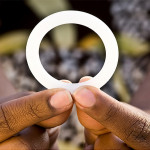The Joint United Nations Programme on HIV/AIDS (UNAIDS) goal for the rapid scale-up of HIV testing and treatment would be hugely expensive in hard-hit South Africa but also cost effective. Publishing their findings in the Annals of Internal Medicine, researchers used mathematical modeling to compare the current pace of virologic suppression scale-up in South Africa with the UNAIDS goal.
In 2014, UNAIDS set a global goal, known as the 90-90-90 program, of diagnosing 90 percent of people living with HIV, getting 90 percent of that group on antiretrovirals (ARVs) and getting 90 percent of that group virally suppressed by 2020. This translates to a 73 percent overall viral suppression rate. Currently, 24 percent of South Africans living with HIV have a fully suppressed virus, a figure that, under current trends, would rise to 36 percent by 2020.
The researchers factored into their modeling published estimates and South African survey data on HIV transmission rates, fertility rates among HIV-positive women broken down by age and the cost of HIV care.
Compared with the current HIV treatment scale-up strategy in South Africa, the UNAIDS 90-90-90 strategy would, in five years, avert 873,000 transmissions of the virus and 1,174,000 deaths and prevent 726,000 children from losing their mothers while saving 3,002,000 cumulative years of life. Over 10 years, the 90-90-90 strategy would avert 2,051,000 transmissions and 2,478,000 deaths; prevent 1,689,000 children from losing mothers; and save a cumulative 13,340,000 years of life.
The extra cost of the UNAIDS strategy would amount to an estimated $7.965 billion over five years and $15.979 billion over 10 years.
This investment would translate to a cost of $2,720 for each additional quality-adjusted life year (QALY) gained over the current South African strategy. (A QALY is one year lived in full health. Less than optimal health counts as less than one QALY, depending on how compromised health is.) Each year of life saved would cost $1,260. Both these figures are considered cost effective.
To read the study abstract, click here.

From Walensky et al. Ann Intern Med. Published online 31 May 2016 (http://annals.org/article.aspx?articleid=2526198) doi:10.7326/M16-0799 .Used with permission. © 2016 American College of Physicians.

From Walensky et al. Ann Intern Med. Published online 31 May 2016 (http://annals.org/article.aspx?articleid=2526198) doi:10.7326/M16-0799 .Used with permission. © 2016 American College of Physicians.







Comments
Comments